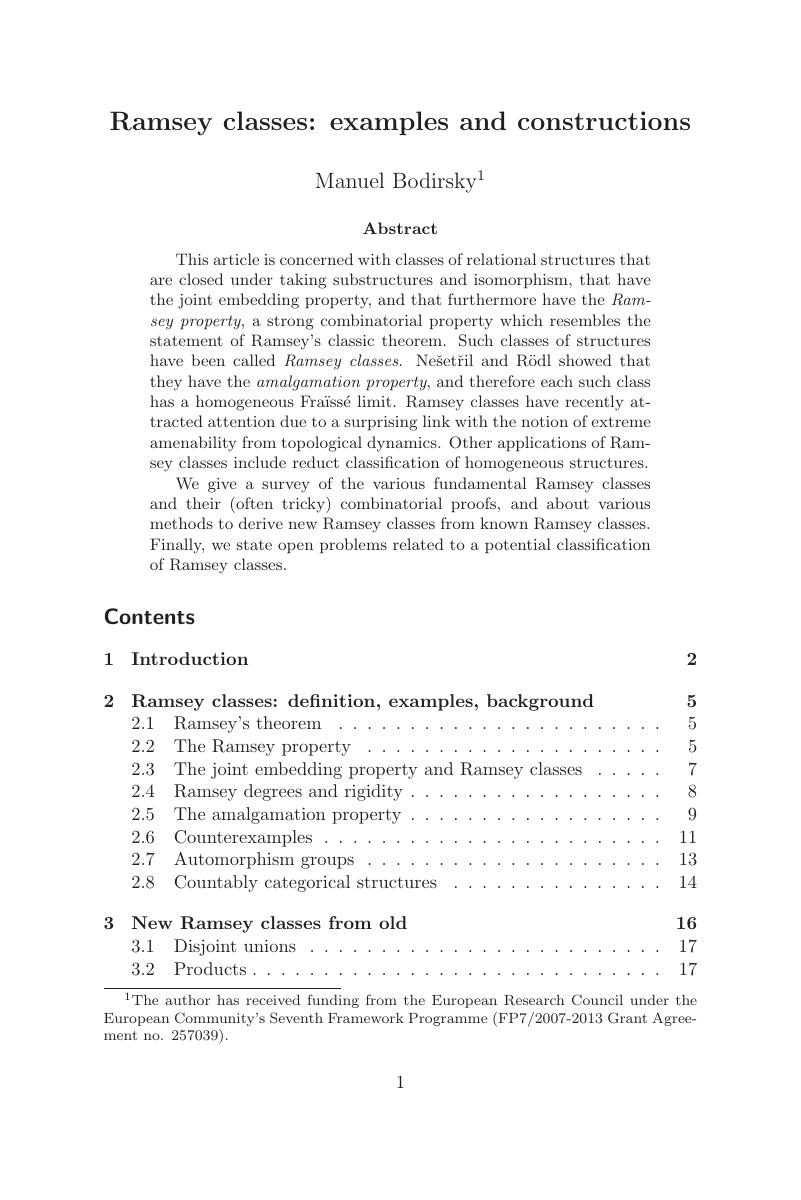Book contents
- Frontmatter
- Contents
- Preface
- 1 Ramsey classes: examples and constructions
- 2 Recent developments in graph Ramsey theory
- 3 Controllability and matchings in random bipartite graphs
- 4 Some old and new problems in combinatorial geometry I: around Borsuk's problem
- 5 Randomly generated groups
- 6 Curves over finite fields and linear recurring sequences
- 7 New tools and results in graph minor structure theory
- 8 Well quasi-order in combinatorics: embeddings and homomorphisms
- 9 Constructions of block codes from algebraic curves over finite fields
- References
1 - Ramsey classes: examples and constructions
Published online by Cambridge University Press: 05 July 2015
- Frontmatter
- Contents
- Preface
- 1 Ramsey classes: examples and constructions
- 2 Recent developments in graph Ramsey theory
- 3 Controllability and matchings in random bipartite graphs
- 4 Some old and new problems in combinatorial geometry I: around Borsuk's problem
- 5 Randomly generated groups
- 6 Curves over finite fields and linear recurring sequences
- 7 New tools and results in graph minor structure theory
- 8 Well quasi-order in combinatorics: embeddings and homomorphisms
- 9 Constructions of block codes from algebraic curves over finite fields
- References
Summary

Information
- Type
- Chapter
- Information
- Surveys in Combinatorics 2015 , pp. 1 - 48Publisher: Cambridge University PressPrint publication year: 2015
References
Accessibility standard: Unknown
Why this information is here
This section outlines the accessibility features of this content - including support for screen readers, full keyboard navigation and high-contrast display options. This may not be relevant for you.Accessibility Information
- 7
- Cited by
